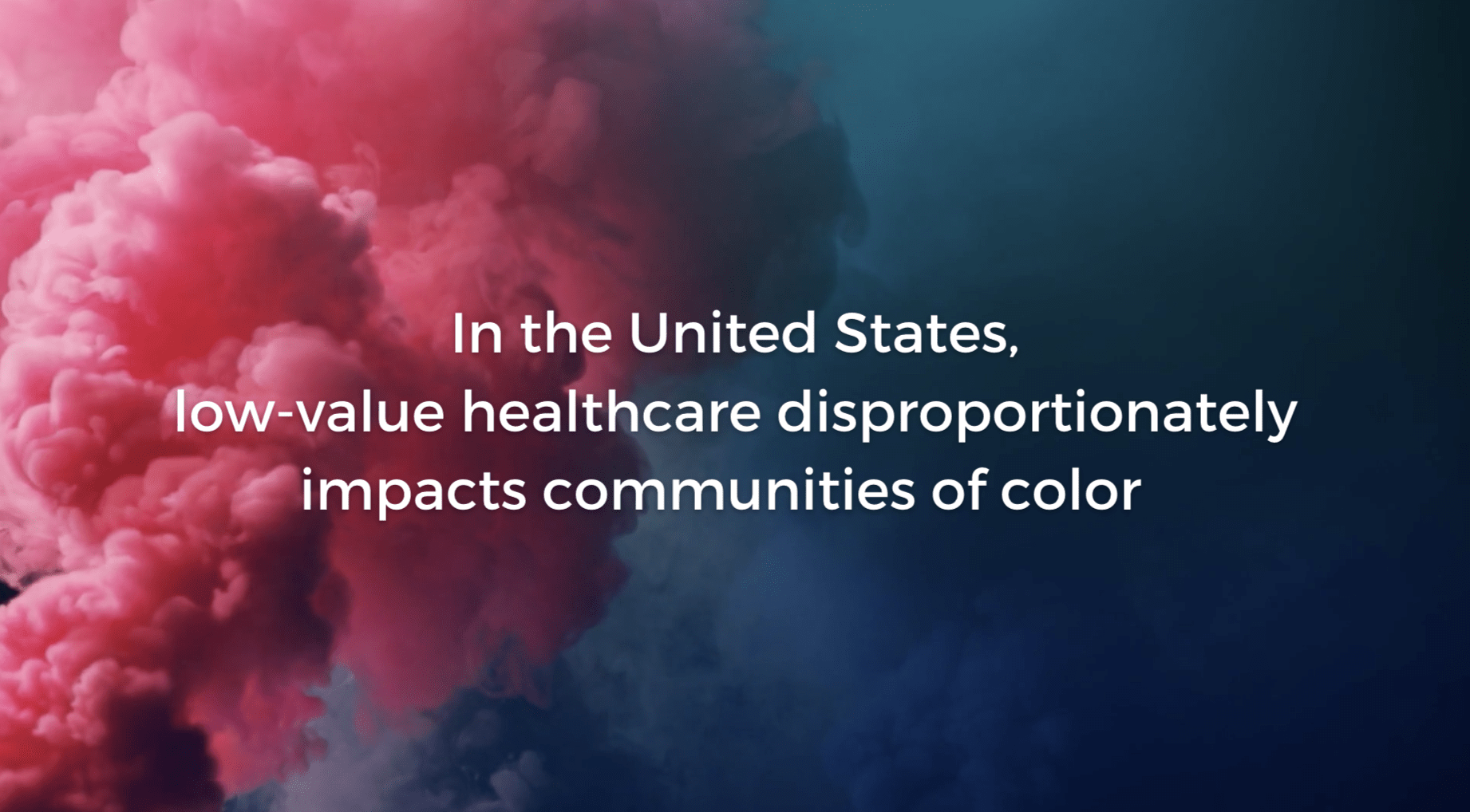
Advancing health equity—ensuring all Americans have the opportunity for good health—is an important policy objective that supports both social justice and economic growth.
To reduce disparities in health outcomes, we must reduce disparities in factors that impact health. One such factor is access to health care. While the Affordable Care Act has reduced disparities in insurance coverage, populations of color and those of lower SES are still more likely to lack financial access to care. (1) Without proper access to evidence-based clinician visits, diagnostic tests, and prescription medicines that play a critical role in preventing and managing disease, communities of color experience higher morbidity and mortality rates.
The 2022 Scorecard on State Health System Performance used 24 performance indicators to evaluate each state’s performance for nonwhite racial and ethnic groups. The data aggregated from these indicators reflect health outcomes, health care access, and health care quality.
The maps shown here illustrate how decentralized policy design, implementation, and evaluation, can variably affect racial health outcomes and health equity across the United States.
While state health system performance scores vary widely, one finding that proves consistent across nearly all states is that white people receive more and better care.
Where data was available, the equity dimension score for non-whites ranged from 1-48. In comparison, the health system performance score for whites ranged from 38-100, with only three states — Mississippi, Oklahoma, and West Virginia — falling below 50. Missouri was the only state to receive an equity dimension score that was higher than the performance score for whites.
Nationally, the uninsured rate for those under age 65 is much higher for populations of color. For Black and Hispanic populations, uninsured rates have been on the rise since 2016.
In 2020, 6.7% of White adults reported being uninsured, compared to 11.7% of Black adults, 19.5% of Hispanic adults, and 22% of American Indian/Alaskan Native (AIAN) adults.
In most states, people of color who are insured are less likely to have a usual source of care, and are more likely to go without necessary care due to cost.
In 2020, 7.9% of Asian/Native Hawaiian/Pacific Islander (AANHPI), 12.7% of Black, 15.8% of AIAN, and 16.7% of Hispanic adults reported not seeing a doctor in the past 12 months because of cost, compared to only 7.7% of white adults.
Additionally, Black and AIAN people are more likely to die early from conditions that are treatable with timely access to high-quality health care.
In 2019, Black deaths amenable to timely access to health care were more than double the rate of that for Whites.
Increasing access to high-value health care in underserved communities is an essential strategy in advancing health equity. However, not all healthcare that is routinely delivered improves patient-centered outcomes. (1)
low-value care
Studies estimate that as much as 25% of total US medical spending does not contribute to improved individual or population health. Low-value care can be defined as “[s]ervices that provide little or no benefit to patients, have potential to cause harm, incur unnecessary cost to patients, or waste limited healthcare resources,” and contributes to over $760 billion in wasteful health spending annually.
Low-value care is a burden to all patients in time, risk, and resources, but the price tag may be especially high for those who already have less opportunity for good health. In addition to the burdens and risks to individuals, low-value care creates systemic costs and resource tradeoffs.
Black, Hispanic, and other underserved communities are more likely to receive less high-value care and more low-value care, thus resulting in a double jeopardy situation where broader disparities in healthcare and patient-centered outcomes worsen. Efforts to increase access to care and advance health equity will be most effective when done with attention to promoting high-value care and minimizing low-value care.

moving forward
It is well known that the causes of health disparities are intertwined with behavioral, economic, environmental, and social factors. While a single approach is unlikely to resolve prevailing health inequities, understanding racial and ethnic differences in the receipt of low-value care, as well as concerted efforts across a range of evidence-based solutions, may incrementally improve health equity. (2)
- How do we get there?
- Devote resources to examine how low-value care impacts equity
- Increase engagement with underserved communities to identify services that are low-value
- Ensure that research incorporates the unique perspectives and needs of these communities
- Promote policy changes – such as value-based insurance design and payment reform – to reward high-quality care and remove incentives for the provision of low-value care. Such changes can system-wide savings, re-allocate spending to prioritize high-value care, and improve patient outcomes in communities of color.
- Clinically driven solutions that reward quality, patient-centered outcomes, and enhanced equity, can create headroom to re-allocate spending to high-value services without increasing premiums or deductibles
- Rewarding quality, patient-centered outcomes, and enhanced equity can create system-wide savings, prioritize high-value care, and improve patient outcomes in communities of color and other underserved populations
- Understanding racial and ethnic differences in the receipt of low-value care should inform policies aimed at addressing health care disparities, including the design of payer performance metrics.
By incorporating equity and the diverse needs of underserved communities in the definition of value, we can encourage progress towards addressing disparities
